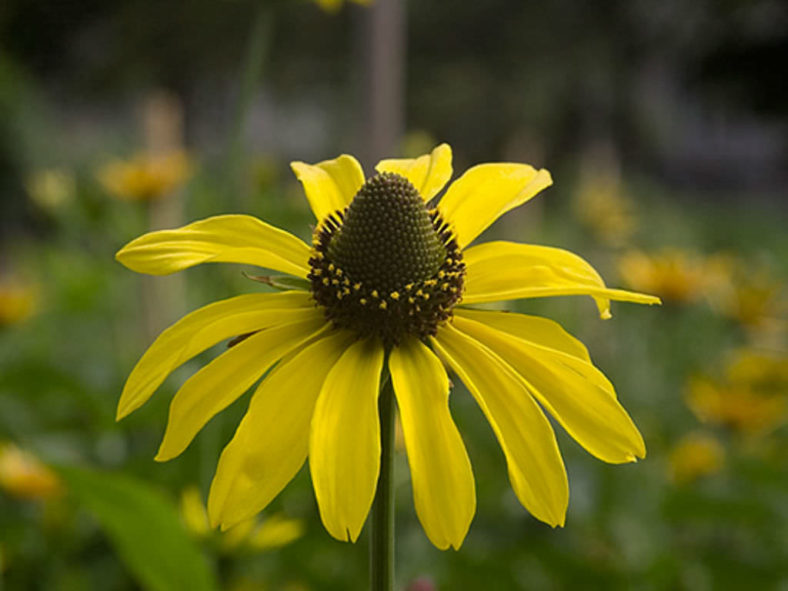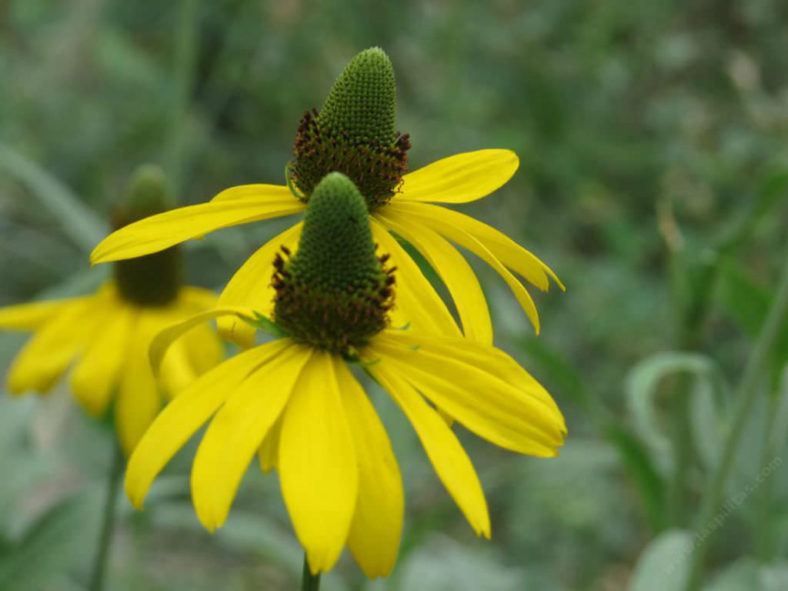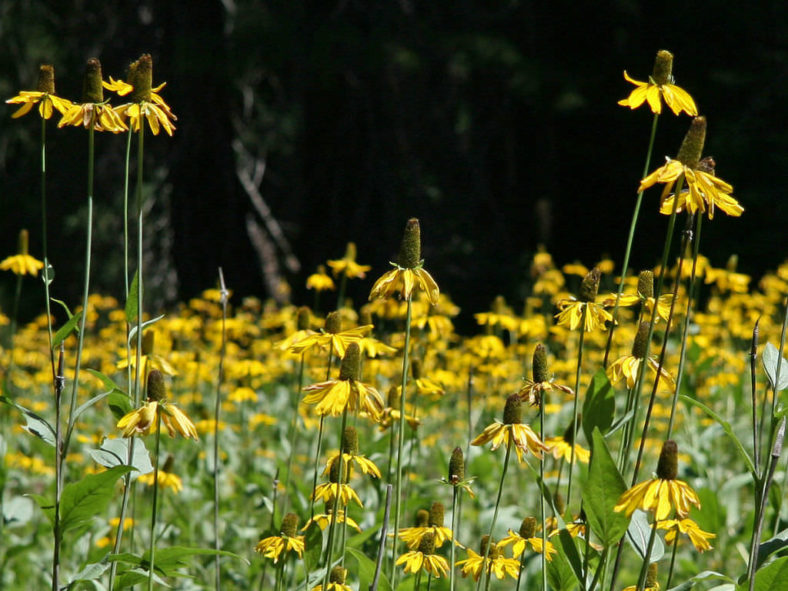Scientific Name
Rudbeckia californica A.Gray
Common Name(s)
California Coneflower
Synonym(s)
Rudbeckia californica var. californica
Scientific Classification
Family: Asteraceae
Genus: Rudbeckia
Origin
This species is native to California, where it grows in the Sierra Nevada, the Klamath Mountains, and northern coastal areas.
Flower
Color: Yellow
Bloom Time: Summer
Description
Rudbeckia californica is an erect perennial herb that grows from a thick rhizome with its stem exceeding 3.3 feet (1 m) in maximum height and sometimes approaching 6.7 feet (2 m). It usually has no branches. Most of the large leaves are basal, with a few alternately arranged along the stem. The leaves are up to 12 inches (30 cm) long, lance-shaped to oval, smooth-edged, or lobed.
The inflorescence is a usually solitary sunflower-like flower head with a base up to 2.4 inches (6 cm) wide and lined with several ray florets, each up to 2.4 inches (6 cm) long. The yellow-ray florets extend outwards and then become reflexed, pointing back along the stem. The disc florets filling the button-shaped to conical to the cylindrical center of the head are greenish-yellow. Fruits are achenes, each up to 0.2 inches (0.5 cm) long, tipped with a pappus of scales.

Hardiness
USDA hardiness zone 6a to 9b: from −10 °F (−23.3 °C) to 30 °F (−1.1 °C).
How to Grow and Care
Black Eyed Susan plants are drought resistant, self-seeding, and grow in a variety of soils. Growing Black Eyed Susans prefer a neutral soil pH and a full sun to light shade location.
Black Eyed Susan care will often include deadheading the spent blooms of the flower. Deadheading encourages more blooms and a sturdier, more compact plant. It also can stop or slow the spread of the Black Eyed Susan flower, as seeds are contained in the blooms. Seeds may be allowed to dry on the stem for reseeding or collected and dried in other ways for replanting in other areas. Seeds do not necessarily grow to the same height as the parent from which they were collected.
The Black Eyed Susan flower attracts butterflies, bees, and other pollinators to the garden. Deer, rabbits, and other wildlife may be drawn to Black Eyed Susans, which they consume or use for shelter. When planted in the garden, plant the Black Eyed Susan flower near Lavender, Rosemary, or other repellent plants to keep wildlife at bay.
See more at How to Grow and Care for Black Eyed Susan.
Links
- Back to genus Rudbeckia
- Plantpedia: Browse flowering plants by Scientific Name, Common Name, Genus, Family, USDA Hardiness Zone, or Origin
Photo Gallery
Click on a photo to see a larger version.




